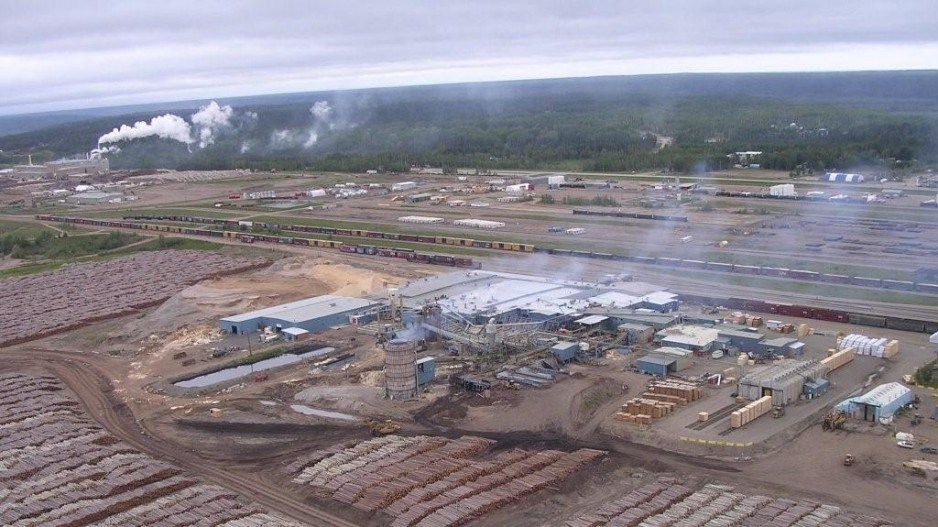A lack of timber will likely close more mills in B.C. in the coming years, thanks to a dwindling annual allowable cut.
But one area of the province that still has an adequate timber supply is Fort Nelson, which wasn’t affected by the mountain pine beetle the way Interior pine forests were and does not have the same conservation concerns over the mountain caribou that its neighbours to the south in the Peace region have.
It just hasn’t had much luck getting idled mills in the area restarted.
Mike Gilbert, regional development officer for the Northern Rockies Regional Municipality, has been trying to hammer home the message to government and industry that the Fort Nelson timber supply area (TSA) has an annual allowable cut of 1.6 million cubic metres that has been pretty much untouched for about a decade, and which is expected to increase, following a timber supply review that’s underway.
It also has rail access, a willing workforce and cheap rents.
The area’s boreal forest doesn’t have a lot of pine – it’s mostly spruce and aspen – so it wasn’t affected by the mountain pine beetle the way Interior pine forests were.
And the region’s caribou are mostly boreal, not mountain caribou, whose dwindling numbers have prompted the province to develop a conservation plan that could take an estimated 300,000 cubic metres out of the annual allowable cut (AAC) for the Peace region to the south.
“That plan has no direct effect on our TSA,” Gilbert said.
He expects some caribou conservation measures will be instituted but does not think they will have the same impacts as those planned for the Peace region.
The Fort Nelson area had a dimensional lumber sawmill, an oriented strand board (OSB) mill and a plywood mill, all of which are shut down. Only one small family-owned sawmill in the area is still operating.
Canfor Corp. (TSX:CFP) owned the OSB mill that shut down, and the company still owns 1.2 million cubic metres of the area’s 1.6 million cubic metres of AAC as part of two different licences.
One of the licences is attached to the OSB mill that Canfor closed in 2008. That licence is up for renewal in December and could free up 600,000 cubic metres to other buyers.
“The previous minister and current minister [of forests] have both agreed that that would not be rolled over into Canfor’s hands, but rather that would be redistributed,” Gilbert said.
The regional municipality has partnered with the Fort Nelson First Nation. They hope to secure a new community forest agreement with 200,000 cubic metres of AAC.
Because there has been little logging for about a decade in the area, a restarted mill could burn through several years’ worth of timber without even touching the AAC. Gilbert therefore expects that a timber supply review that’s underway will increase Fort Nelson’s AAC.
“All the signals are that, of all the TSAs in the province, we may be the only ones that see an uplift in the AAC,” Gilbert said.
Once the timber supply review is done, Gilbert hopes some company may be willing to invest in restarting the OSB mill that was shut down in 2008.
If the mill ever did restart, Gilbert said, the Canadian National Railway Co. (TSX:CNR) would need to reactivate a rail line that runs to the old OSB plant.
Gilbert said several forestry companies are considering potentially restarting the Fort Nelson mill.
“And we are expecting something to happen in the short to mid-term.”
See related stories: B.C. forestry’s stock shock highlights industry troubles and Bill 22 is a catch-22 for B.C. forest companies.




